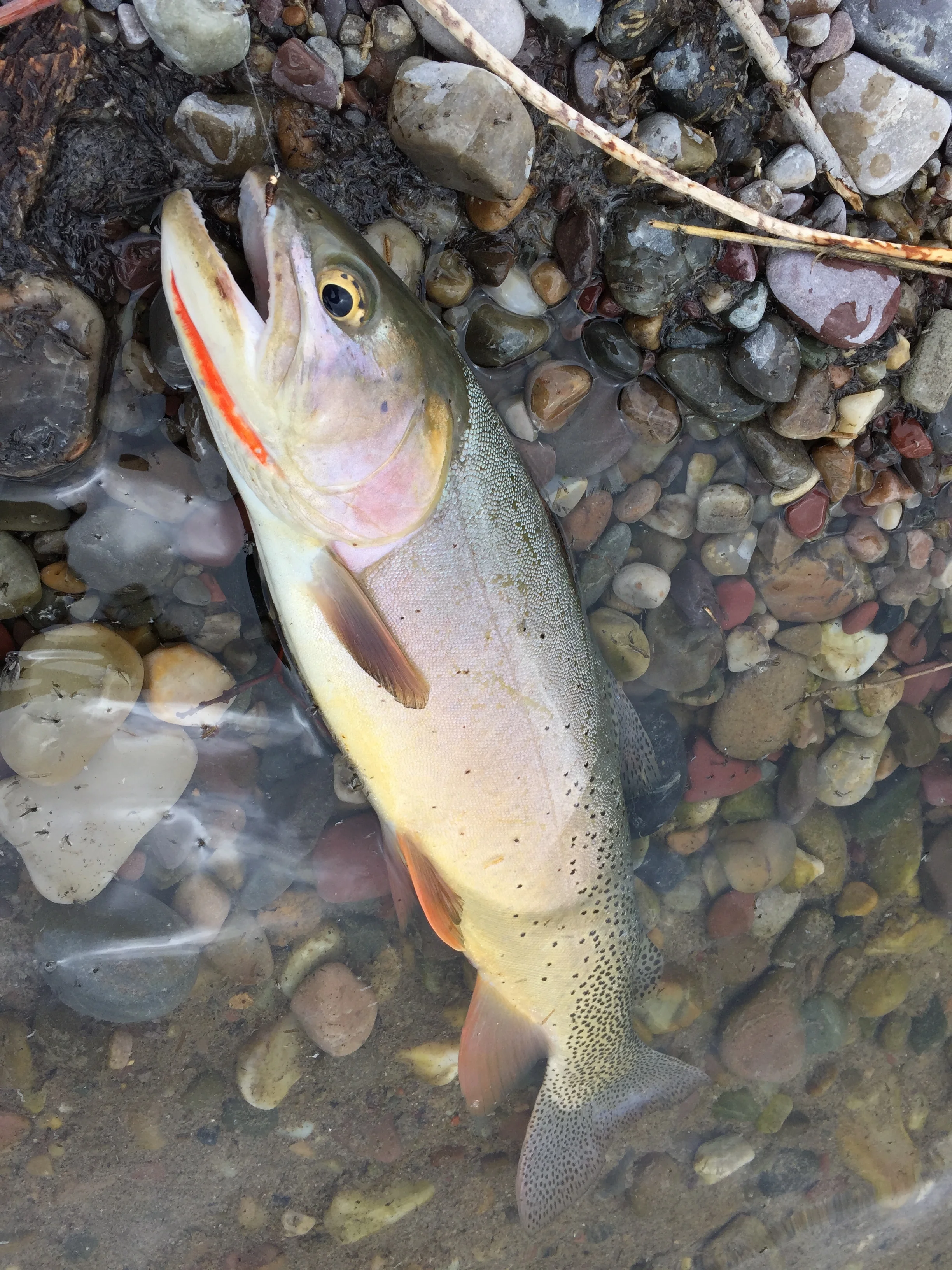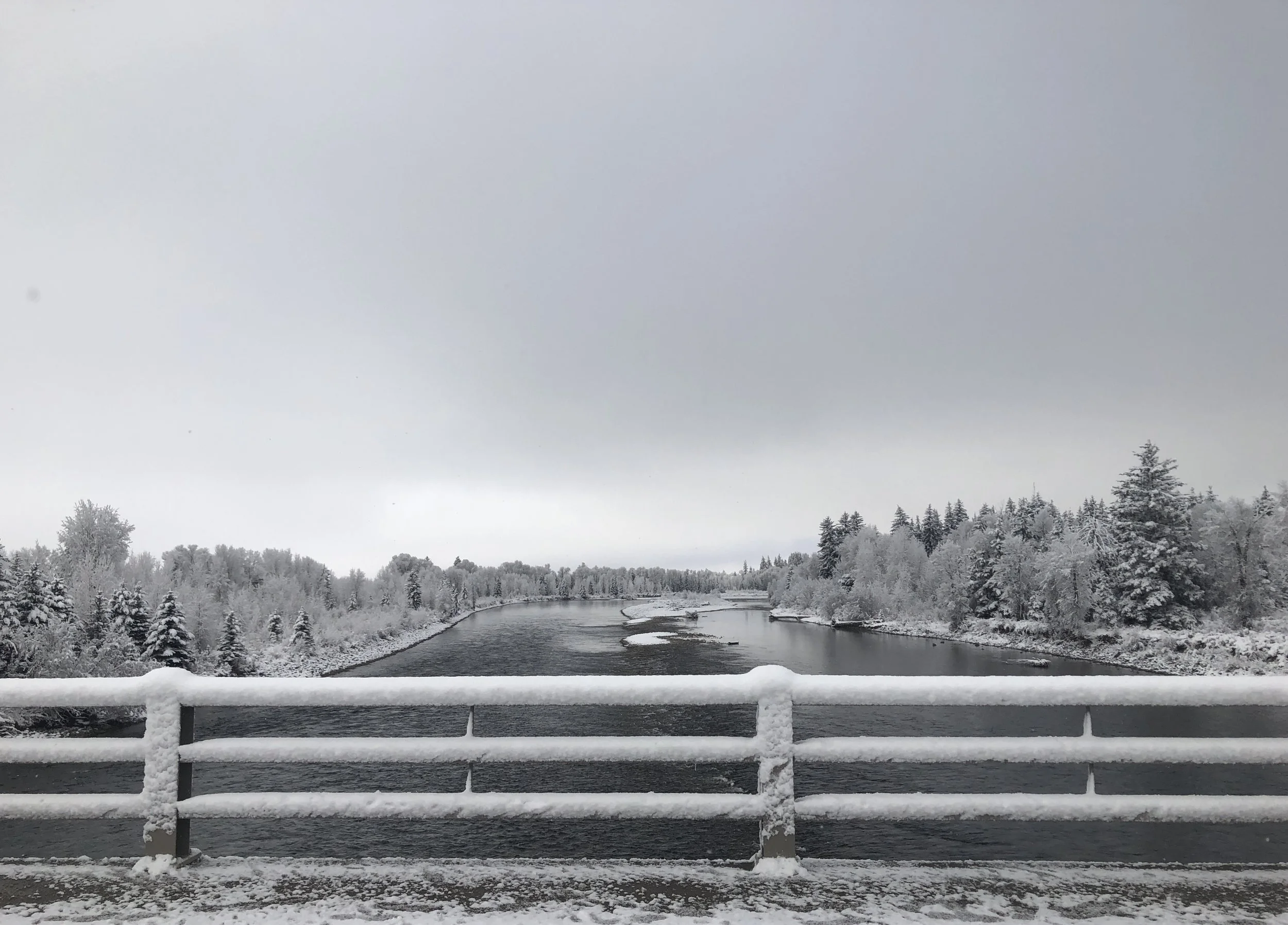The typical winter weather patterns have set in for the Jackson Hole Valley. Expect temperatures below freezing and snow accumulations to bog down trails and reach further into the Snake from the slower banks.
The summer terrestrials have come and gone, and the Snake has become an entirely different river from its summer form. Having lost most of its water, the river is now small, intimate, and friendly to those on foot.
The trout will be quite easy to find. Look for slow water with enough depth to afford protection and adjacent currents that stir passing food items slowly down the course. Most of our Cutthroat trout will have settled into a winter resting phase, a near hibernation state, interrupted only by the occasional temperature swing above 40 degrees.
These warm periods offer some of the best fishing of the year on the Snake. The trout and whitefish, now congregated into the deeper holes and slow current seams, will break their inactivity and rise through the water column to feed when it happens.
The “it” I’m referring to is an abundant hatch of small macro-invertebrates that go largely unnoticed most of the year. They buzz around exposed rock and slow back eddies, forsaken to the larger insects that anglers choose to imitate; the Hecuba, Hoppers, and errant Stoneflies.
And now they are regarded as a saving grace that bring fish to the surface all winter long. The insects are called Midges and they can hatch into the thousands, even on blustery December days while snow and ice engulf the trickling Snake.
There is much to be grateful for this time of the year. The rivers are quiet, full of congregated trout and Mountain Whitefish, and just waiting to break open into hundreds of feeding mouths.
Happy Thanksgiving!!
A winter Snake River Cutthroat. Look at all the Midges in the surface film!
#RiverRangeAdventures
#wherethewildstillholdsdominion


